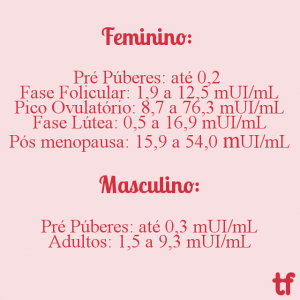Luteinizing hormone, or LH as it is more commonly known, is one of the key players in the female fertile cycle. Contrary to what many people think, LH (Luteinizing Hormone) is not always actively present in the body, but is more influential during the fertile period. In women, this hormone acts as an enzyme that stimulates the maturation of the follicles during the fertile period. In men, it plays a part in the production of sperm as well as testosterone, helping with sexual desire. In reality, it is a bit more complex for women. Hard to understand? Let’s go step by step then…
The body begins the fertility cycle right after menstruation, or even during it. The organ initially responsible for fertility is the brain. More specifically, a gland located in the brain, the pituitary gland1. This gland is responsible for several hormones in the body, among them GnRH, a hormone that stimulates the production of FSH. FSH, in turn, is the hormone that stimulates the ovarian reserve, which women are born with.
Ovarian stimulation happens through FSH, and then estrogen takes over, causing the follicles to grow and transform into beautiful eggs with the appropriate size to rupture2: about 19 to 30mm in diameter. As the egg grows, luteinizing hormone will gradually increase and do its job: to mature the follicles so they are ready for fertilization. We can say that the more LH present in the body during ovulation, the greater the chance of the woman ovulating. That’s why, for those who want to get pregnant, it is important to identify the LH surge in the body.
How to Detect the Presence of Luteinizing Hormone in the Body?
A simple blood test at a laboratory can measure exactly the amount of luteinizing hormone in the body. Here is a small table below to help understand the reference values:
Another simple and widely used method is fertility testing. The luteinizing hormone is detected by the test strip, so the more hormone present, the stronger the test line will appear. The amount is directly related to the time the woman is about to ovulate. If the test line is as strong as the control line, the ovulation period is within 24 to 48 hours. If it is stronger than the control line, ovulation will occur in 12 to 24 hours.
In men, there is no surge as in women, but the luteinizing hormone is still very important. It helps produce the main element for male fertility, sperm. Therefore, men undergoing fertility assessments should have this test done.
Excess luteinizing hormone significantly increases in women with other hormonal problems, such as polycystic ovaries, for example. Levels are also higher in women with only one ovary and men who are infertile or who have had a vasectomy. It is also possible for men who have had their testicles removed for any reason to have LH problems.
Women who are significantly overweight can have luteinizing hormone levels above the expected range. They may present values above 100mUi even when not in their fertile period. In these cases, medical treatment is needed as soon as possible to balance hormone levels. If the goal is to get pregnant, treatment is necessary to balance hormone amounts so the body will function like any other. In most cases, treatment is based on other hormones. It is up to the doctor to decide which medications are appropriate for each case, whether for men or women. Some natural elements can contribute to LH control, a good natural example being tribulus terrestris.
See also: Trying, Hyperthyroidism, Hypothyroidism, and Pregnancy












